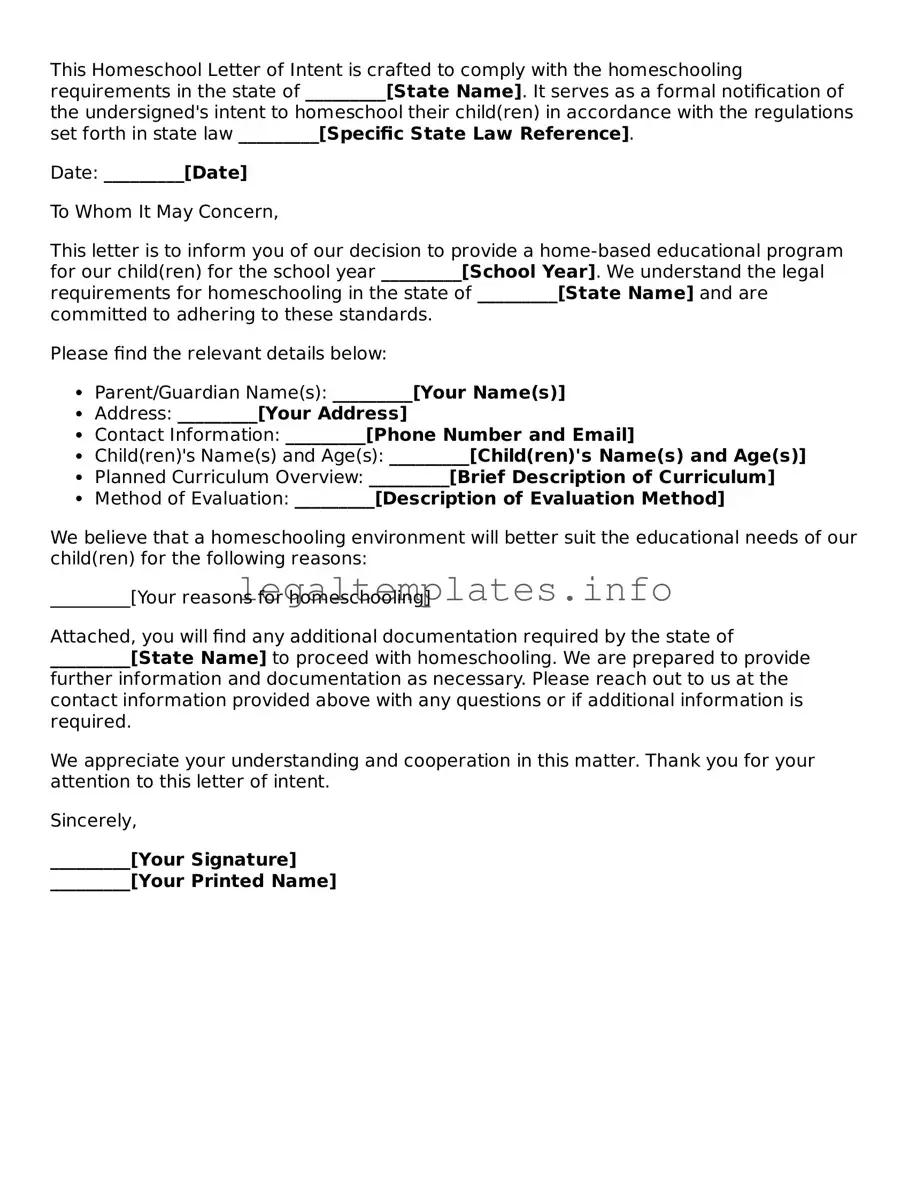Filing a Homeschool Letter of Intent can be a crucial step for parents or guardians opting to educate their child at home, yet it is often fraught with errors that can complicate or delay the process. One common mistake is overlooking the need to verify state-specific requirements before submission. Each state has its own set of rules regarding homeschooling, and failure to meet these specifications can lead to the rejection of the application.
Another frequent oversight involves not thoroughly reading the form instructions. This might seem trivial, but the devil is in the details. Misunderstanding the instructions can lead to incorrectly filled sections or, worse, completely missed steps that are critical for the acceptance of the form. This is compounded by the mistake of failing to provide complete and accurate personal information. Leaving fields blank or entering incorrect data about the student or the homeschool administrator can lead to significant delays.
Additionally, some individuals forget to outline their educational objectives or curricula plans clearly. States often require a detailed explanation of the intended instruction to ensure it aligns with educational standards. A vague or incomplete curriculum description can raise red flags with education officials, leading to further inquiries or requests for clarification. Equally important, and often related, is the error of not demonstrating adherence to compulsory education laws. It’s critical to show that the planned homeschooling will comply with state laws regarding subjects taught, hours of instruction, and attendance records.
A paperwork error frequently made is neglecting to keep a copy of the Letter of Intent and all supporting documents. Once submitted, these documents are often challenging to reclaim from state or local education agencies. In the event of a dispute or request for evidence of compliance, having these documents readily accessible is invaluable.
Submitting the Letter of Intent outside the designated timeframe is another pitfall. Some states have specific windows during which homeschool paperwork must be filed, and missing these deadlines can result in unnecessary complications. Furthermore, failing to update the Letter of Intent when necessary, such as after a move to a new jurisdiction or a change in the educational plan, is a mistake that can lead to legal issues or the interruption of the child’s education.
Lastly, a more nuanced error involves not consulting a legal professional or educational consultant when uncertainties arise. The assumption that the process is straightforward or identical to that of another family’s experience can lead to errors that a professional could easily avert. Their guidance can be instrumental in navigating the complexities of homeschooling laws and requirements.
In summary, while the process of submitting a Homeschool Letter of Intent is an essential step in formalizing a homeschooling arrangement, it is fraught with potential errors. Attention to detail, adherence to state-specific requirements, and, when in doubt, seeking professional advice can mitigate these risks and help ensure a smooth process.
